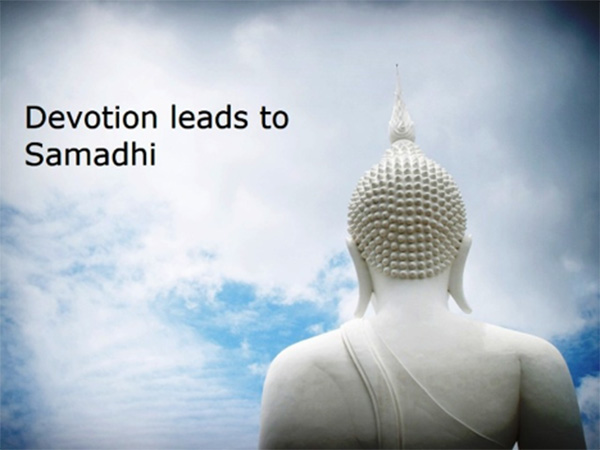Chapter 1 – Concentration/Samadhi Pada – Part 9
Samadhi Attained by Devotion – Yoga Sutras (1.23-1.24)
Patanjali uses the next few sutras to focus on the concept of Ishvara in the framework of yoga. Early writings often used Ishvara to mean “master.” A yogesvara was therefore a “master of yoga.” Ishvara is derived from the root, meaning to rule or to own. It is translated by many modern commentators with terms such as Supreme God, Lord, and Divine (with form).
In the Upanishads, the word Īśvara is used to denote a state of collective consciousness. Thus, as opposed to some other religious concepts, God is not a being that sits on a high pedestal or cloud high up in the sky along with the sun, moon, and stars. God is the actual state of Ultimate Reality. But due to the lack of direct experience, God has been personified (given form) and given various names and features by religions throughout the history.
When someone expands their individual consciousness to the Universal Consciousness, it is called Self-realization. The individual self has realized the unity of all diverse things, the very underlying principle, or “Universal Self”, constituting all names and forms.
The great sages of the Upanishads avoided the confusions related to various religious conceptions of God. Instead, they encouraged students of yoga to be honest and sincere in their quests for Self-realization.
As Christopher Isherwood aptly noted in “How to Know God,” we can’t imagine or conceptualize the true reality of God. But we can understand a personalized God. In yoga, this personalized God reflects the connection that we may find through concentration, meditation and Samadhi.
But it is necessary to keep in mind that God as experienced through Isvara is still an object. Accordingly, the experience of separation between ourselves and the object of our devotion remains intact until in the end. Then we must release even this devotion if we are to attain Asamprajnata Samadhi. This requires a huge leap of faith, and one that our egos will constantly resist.
Now on to the sutras …
Yoga Sutra (1.23) – ishvara pranidhana va. Ishvara means creative source, personal God, supreme Guru, or teacher. Pranidhana is dedication, devotion (surrendering of fruits of practice). Va means “or”, also.
Translated this may mean…From a process of dedicated devotion and releasing into the creative source from which we originated (Ishvara Pranidhana), the arrival at the state of samadhi is near. Or, in other words, the goal (Samadhi) can also be attained via submission to the concept of a Ishvara (personal God).
So, through sincere, dedicated, and devoted practice to the pure consciousness known as Ishvara, God, or Guru, the results of samadhi will come more quickly. This is much like a type of short cut, or a more direct route to the center of consciousness.
Yoga Sutra (1.24) – klesha karma vipaka ashayaih aparamristah purusha-vishesha ishvara. Klesha means colored, painful, afflicted or impure, (the root klish means to cause trouble). Karma means actions and effects. Vipaka equals the fruits of or maturing (ripening); Ashayaih means by the vehicles, accumulations, mental deposits in the unconscious. Aparamristah is untouched, unaffected. Purusha-Vishesha a special, distinct consciousness, (purusha = a consciousness; vishesha = special, distinct). Ishvara is a creative source, personal God, supreme Guru or teacher. Translated this means, the creative source (Ishvara) is a particular consciousness that is unaffected by colorings, afflictions, or actions. This includes the results that will happen when latent impressions arise and cause those actions. B.K.S. Iyengar translates this sutra, thusly: “God (Ishvara) is the Supreme Being, totally free from conflicts, unaffected by actions and untouched by cause and effect.”
~Rae Indigo
Stay tuned as this series continues with: (Samadhi attained by devotion, cont.; Sutras 1.25-1.29)
